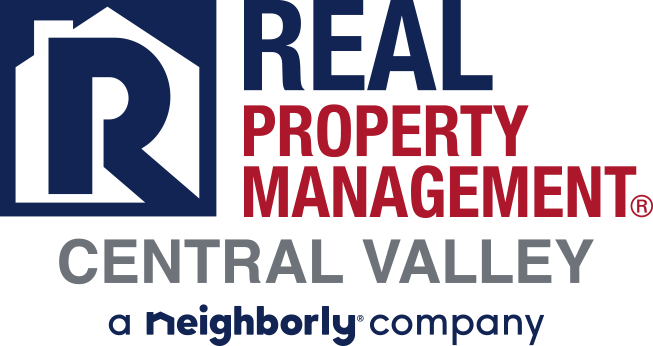What is the BRRRR method? Learn how to grow your portfolio of investment properties

BRRRR stands for “Buy, Rehab, Rent, Refinance, Repeat.”
This real estate investment strategy involves rehabbing run-down homes, renting them out, and then using home equity from the rental to buy your next property.
Many investors have found that following the BRRRR method allows them to build a small empire of rental homes, a continuing passive income, and a net worth that grows over the years.
But of course, real estate investing — not to mention rehabilitating older homes — isn’t for everyone. So you should understand all the ins and outs before getting started.
About the BRRRR method
Before we get into the pros and cons of the BRRRR method, let’s establish what the abbreviation stands for:
- Buy — Find and buy a distressed or underpriced home to purchase
- Rehab — Bring the home up to code so it’s safe. Then renovate to make it attractive to renters
- Rent — Find and screen a creditworthy, reliable renter to bring in
- Refinance — With the renter in residence, do a cash-out refinance on the property
- Repeat — Use the proceeds from your cash-out refinance to find and buy another distressed home at a low price. And keep repeating as often as you can
Of course, the BRRRR method sounds much simpler than it is. There will be a lot of time, money, and work involved to get off the ground and keep your investment portfolio growing.
Those who succeed are likely to be hardworking risk-takers with business savvy, construction skills, and real estate knowledge. They should also be comfortable with periods of financial stress (for instance, when you’re spending cash to buy and rehab property, but don’t yet have any rental income flowing in).
If that sounds like you, though, the BRRRR method could be your ticket to real estate wealth.
Step-by-step guide to the BRRRR method
First, let’s dig into what the BRRRR method really entails at each step of the process.
1. Buy
To start, you need to find a home to which you can add significant value when you rehab it.
Ideally, the property should be one where most of the work is either minor or cosmetic: for example, remodeling the kitchen, laying new floors, improving energy efficiency, and so on. But certain structural issues are fine, providing you can tell the full extent of the existing damage and what it will cost to fix it.
When you’re thinking about the cost of repairs, add 10% or 20% to your rehab budget as a contingency because overruns are common.
At this point, you need to know:
- How much you’ll pay for both the home and the rehab project, making it safe and attractive to potential renters
- How much rent you’ll be able to charge after rehab when the first tenant moves in
- How much the home will be worth when you do your cash-out refinance
Get quotes from at least three contractors for rehab costs. And, if you’re worried about potentially expensive structural defects, bring in professional advice: a home inspector, structural engineer, or other experts.
When assessing the likely rental and sale values of the home, don’t trust your gut or home listings. Pick the brains of local real estate agents. They won’t mind sharing their expertise if they think you might turn into an important client.
This is the time to start thinking about your project in business terms.
Build a spreadsheet with all the numbers, showing cash flowing out during the purchase and rehab phases, and potential money flowing in during the rental and refinancing stages.
Also, be sure to build cost overruns and timetable delays into your estimates. Because you’ll be very lucky if you escape those.
2. Rehab
The more work you can do yourself, the less you’ll pay professionals. And the bigger your profit will be.
But don’t take on tasks unless you’re 100% confident that you have the skills and expertise you need — otherwise you’ll end up wasting both time and money.
Also, think about what mortgage program you’ll be using to purchase the home. Many rehab loan programs only allow you to complete the renovations yourself if you’re a licensed, professional contractor.
Don’t forget that you’re not flipping here. So don’t skimp. You need to bring the home up to code and make it safe. If not, you (as landlord) could later face bills for further repairs. And you might even carry liability that could end in your being sued.
You also have to decide how lavish or basic the cosmetic aspects of your rehab should be. Talk to a local rental real estate agent about that.
Based on the neighborhood and the home’s characteristics, should you be choosing finishes that will attract young professionals, established families, or other types of renters? That could make a big difference in the types of features and upgrades you add.
3. Rent
The rehab’s complete. And you’re ready to show the home to prospective tenants.
This might sound like the easy bit. But that’s not always the case. So read our complete guide to becoming a landlord for more information.
These contain a wealth of information for new landlords. And remember, landlords have a range of legal responsibilities that can be based on federal, state, city, or county laws. So read up on the rules that apply where you’re operating.
4. Refinance
Once you have a tenant in place, you’ll have an income stream. And you can apply to lenders for a cash-out refinance.
Be sure to get quotes (“Loan Estimates“) from at least three lenders. Because that’s the best way to get the lowest rate and best overall deal.
Note that not all mortgage lenders will do cash-out refinances on investment properties. So you may have to shop around for a willing lender and a low rate.
Even then, some require you to own the home for a certain period before you can refinance (often 6 months or more). And expect higher mortgage rates and tougher eligibility criteria than if you were getting a loan for your own home.
5. Repeat
And you’re off! Things should get easier as you move forward because you’ll be gaining experience, confidence, and skills as you go along. And you’ll build contacts with real estate agents who will remember you when they have especially tempting listings.
As importantly, banks and mortgage companies will be more confident lending to you as you become able to demonstrate an ever-more-impressive record of success.
Contact RPM Central Valley
At RPM Central Valley, we offer property management services for the Central Valley, CA. To learn more about the services that we can offer you, contact us today at (209) 572-2222 or click here.
